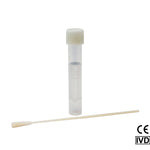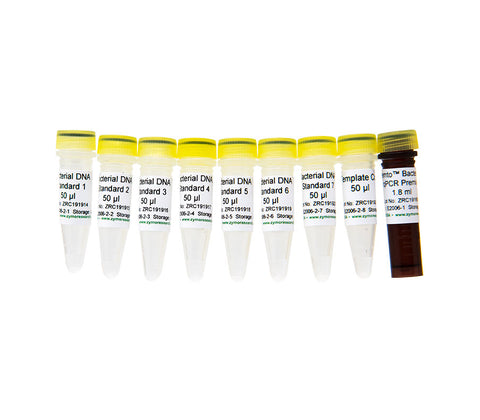Successfully Added to Cart
Customers also bought...
-
 DNA/RNA Shield (50 ml)Cat#: R1100-50DNA/RNA Shield reagent is a DNA and RNA stabilization solution for nucleic acids in any biological sample. This DNA and RNA stabilization solution preserves the...
DNA/RNA Shield (50 ml)Cat#: R1100-50DNA/RNA Shield reagent is a DNA and RNA stabilization solution for nucleic acids in any biological sample. This DNA and RNA stabilization solution preserves the... -
 DNA/RNA Shield SafeCollect Swab Collection Kit, 1ml (1 collection kit)Cat#: R1160The DNA/RNA Shield SafeCollect Swab Collection Kit is a user-friendly collection kit for stabilizing the nucleic acid content of samples collected with a swab. DNA/RNA Shield completely inactivates harmful pathogens...
DNA/RNA Shield SafeCollect Swab Collection Kit, 1ml (1 collection kit)Cat#: R1160The DNA/RNA Shield SafeCollect Swab Collection Kit is a user-friendly collection kit for stabilizing the nucleic acid content of samples collected with a swab. DNA/RNA Shield completely inactivates harmful pathogens...
Femto Bacterial DNA Quantification Kit
| Cat # | Name | Type | Price | Quantity |
|---|
Highlights
- Quantify as little 20 femtograms of bacterial DNA in as little as 1 µl of sample.
- High specificity and sensitivity for bacterial DNA in a background of non-target DNA.
- Fast and simple: add samples to the PreMix... and quantify.
Documents
Product Description
Technical Specifications
| Detection Range | 20 fg to 20 ng DNA |
|---|---|
| Equipment | Real-time quantitative PCR system,vortex, microcentrifuge, PCR tube strip or PCR plate, optically transparent sealing film for PCR plate or tube strip caps |
| Sample Source | Purified DNA |
Resources
Q1: Is there any general advice on GLP for qPCR?
Since this kit is so sensitive, avoiding possible sources of contamination is key for a successful qPCR. - Work in a clean environment and decontaminate the benchtop and pipettes with a 10% bleach solution. - Wipe down the areas with ethanol to remove the trace amounts of bleach and allow the area to try. - Use filtered tips. - Take care to ensure that pipetting is efficient and accurate. Calibrate your pipettes regularly. - Add standards directly into the premix and pipet up and down to flush out any remaining liquid from the tip. - Avoid pipetting onto the walls as this may skew the results. - The SYTO9 dye present within the premix is sensitive to light, so working quickly and diligently is recommended.
Q2: Does qPCR Premix contain ROX?
Our qPCR Premixes does not contain ROX Reference Dye. Ensure that the ROX channel of your device is switched off.
Q3: Which settings can be used for signal detection?
Our qPCR Premixes contains Syto9. You can use the SYBR Green channel for signal detection.
Q4: Are the Femto kits certified for low bioburden?
No, kits are not certified.
Q5: What is the origin of the bacterial DNA Standards?
-Bacterial Standards are generated from E. coli strain JM109. -Standards are QC tested serial dilutions of genomic DNA.
Q6: What is strain JM109?
E. coli strain JM109 is a derivative of strain K12 and is also called K12 JM109. The genome size of the original genome of H12 is 4.64 Mb (ref). Ref: https://www.ncbi.nlm.nih.gov/pubmed/9278503
Q7: How is the copy number of the 16S rRNA gene calculated?
The standards included in the Femto Bacterial DNA Quantification kit are serial dilutions of E. coli genomic DNA. Each E. coli genome has about 7 copies of 16S rRNA gene. One can back calculate from the amount of genomic DNA to determine genomic copies, and then multiply by a factor of 7 to determine total copies of the 16S rRNA gene.
Q8: How to calculate the amount of genomic copies detected with E2006?
Genome copy # = DNA (g) / (g_to_bp const. x genome size) With DNA (g) = 20 ng g to bp const = 1.096 x 10^-21 g genome size = 4.6 x 10^6 bp 20 x 10^-9 g / (1.096 x 10^-21 g/bp x 4.6 x 10^6 bp) = 4.0 x 10^6 copies
| Cat # | Name | Size | Price | |
|---|---|---|---|---|
| E2006-1 | Femto Bacterial qPCR Premix | Bacterial DNA | €222,20 | |
Need help? Contact Us


